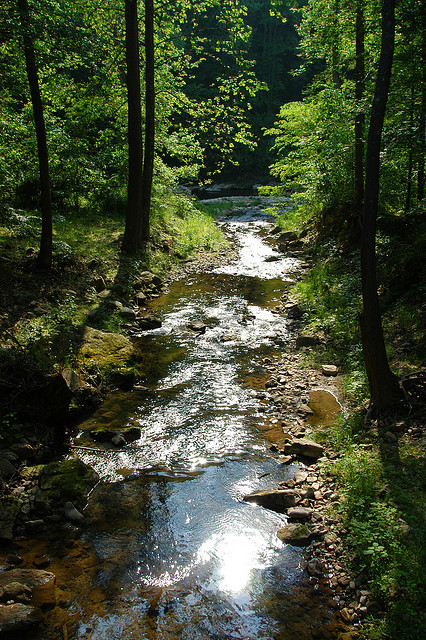Three Ways to Protect Your Rivers and Streams
Three Ways to Protect Your Rivers and Streams
- Creat riparian buffers: These fringes of grass, shrubs, and trees planted along stream banks
 are one of the best ways to protect a water source. Buffers improve water quality by filtering sediment and pollutants from soil runoff and providing shade to keep water cool. They combat erosion by stabilizing banks and regulating stream flow, and they offer habitats to many plant and wildlife species. Riparian buffers vary in width, depending on how the adjacent land is being used, but should be a minimum of 25 to 50 feet. Wider buffers are best for improving water quality and attracting wildlife.
are one of the best ways to protect a water source. Buffers improve water quality by filtering sediment and pollutants from soil runoff and providing shade to keep water cool. They combat erosion by stabilizing banks and regulating stream flow, and they offer habitats to many plant and wildlife species. Riparian buffers vary in width, depending on how the adjacent land is being used, but should be a minimum of 25 to 50 feet. Wider buffers are best for improving water quality and attracting wildlife. - Remove barriers to fish migration: Interrupting a stream's flow with bridges and culverts can damage the heatlh of the system by changing stream conditions and preventing the migration of fish and other aquatic species. Build bridges and culverts that are at least 1.25 times the normal width of the streambed, and place them where the stream is straight and flat. You will need to get a permit to construct most stream crossings. Before you start, be sure to check with your state's natural resource agency to learn what is required.
- Minimize runoff from forest roads: Most of the sediment from forested land is due to runoff from poorly designed and maintained forest roads. When planning roads, think about how you can reduce their number, width, and length, decrease maintenance requirements, and limit your roads' visual and physical impacts. Regularly inspect and repair your roads by filling wet spots, grading to maintain proper drainage, and ensuring ditches and culverts are free of debris


